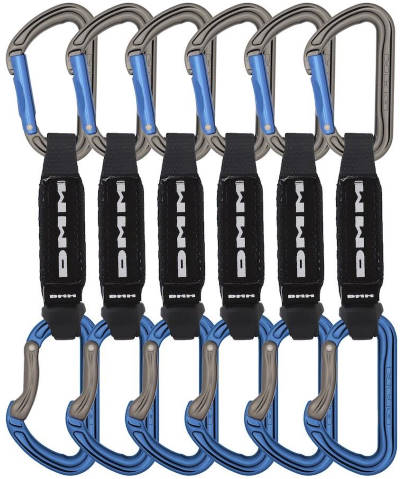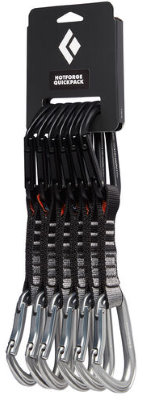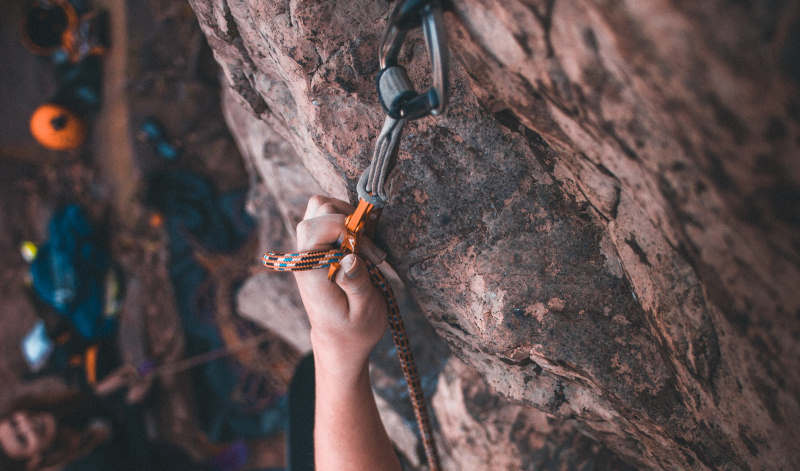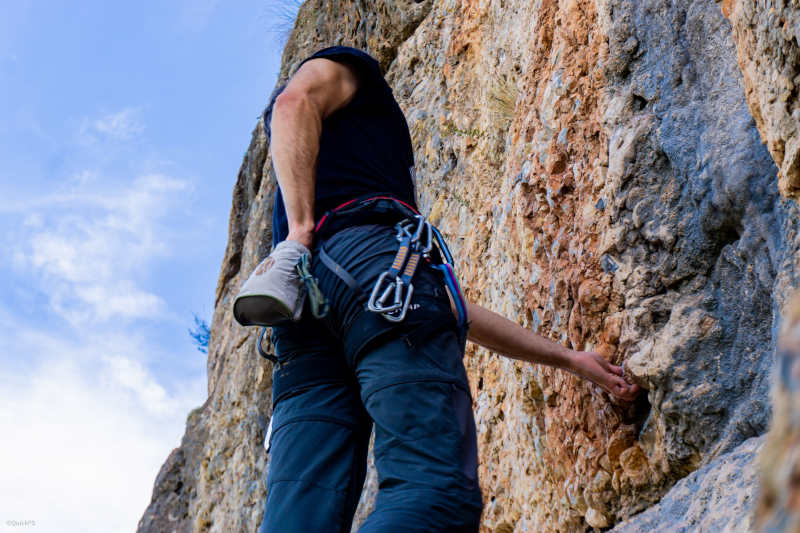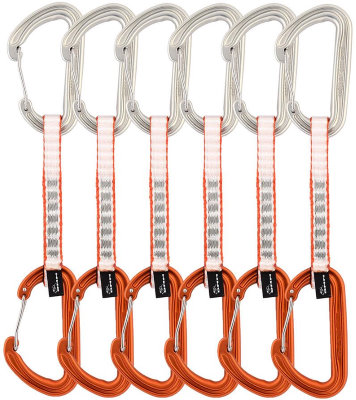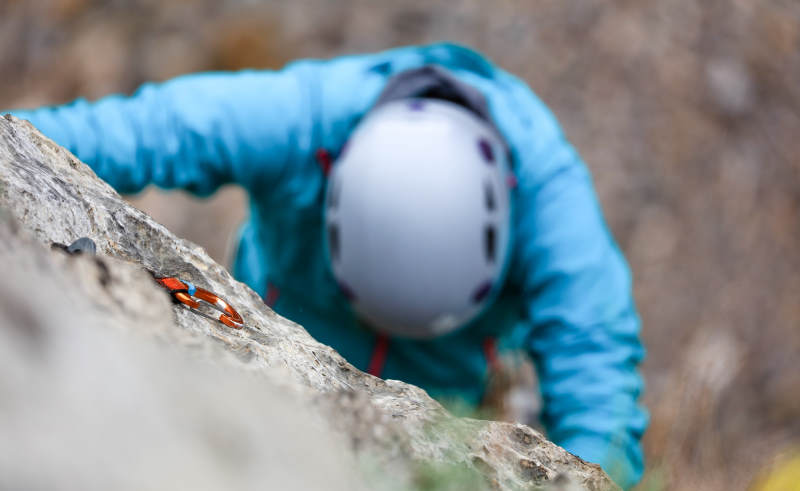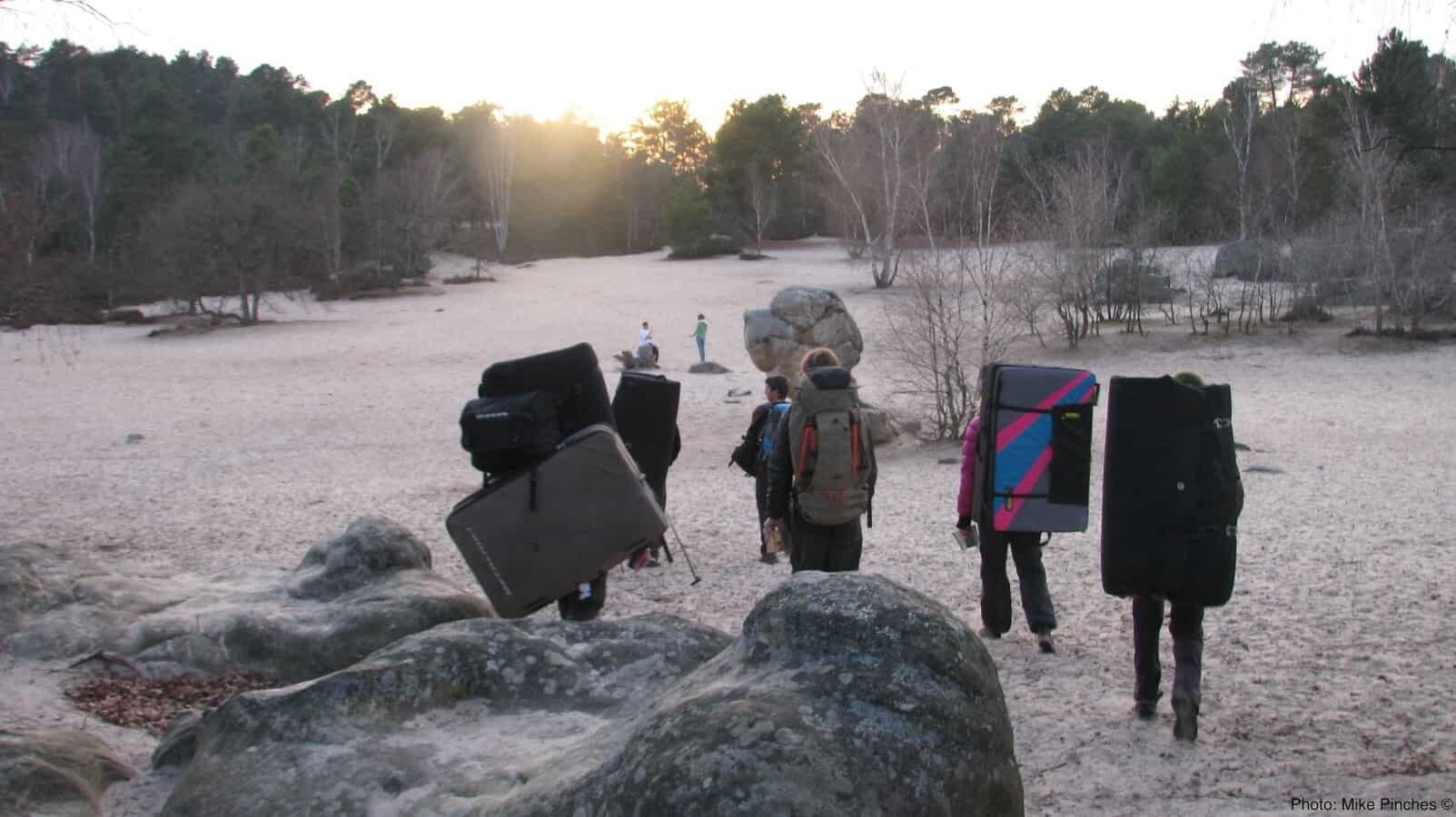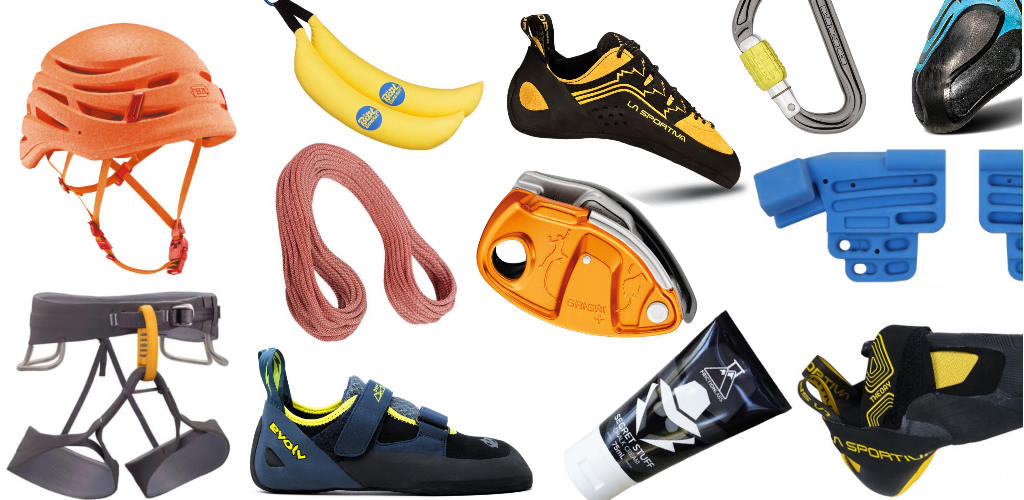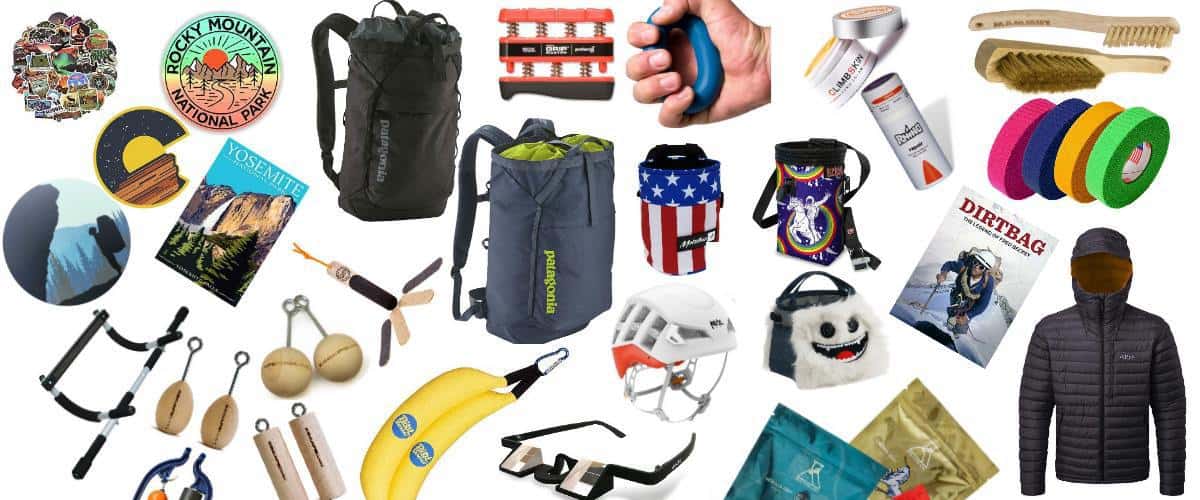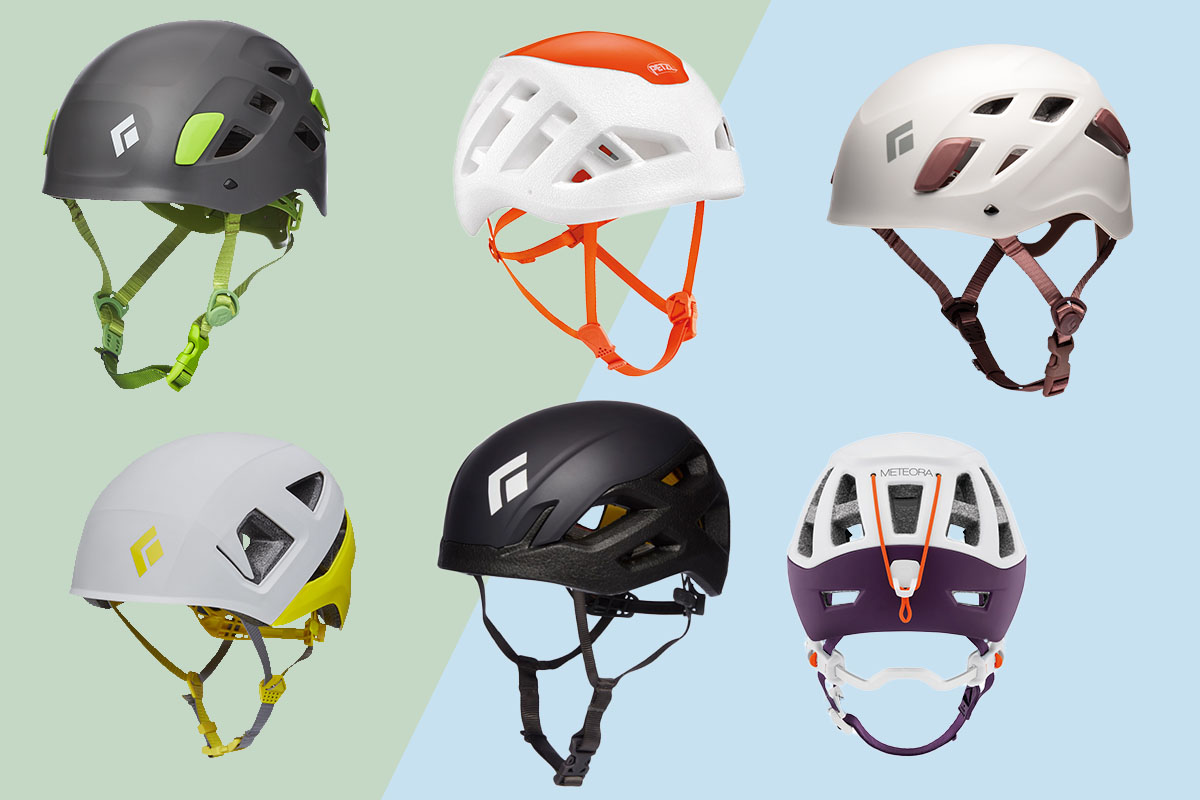If you are newer to outdoors climbing or sport climbing, getting the right gear is a big help. Make sure you have the right amount of quickdraws to safely get up and back down a route with our easy to understand guide.
How Many Quickdraws Do I Need?
We recommend taking 12 quickdraws for most climbs. Most sport climbing routes are around 20-30 meters. On a modern, well bolted route you might have one hangar every two meters. Normally the first hangar is at least two or three meters up.
Depending on how you clean the anchors to come down you’ll probably need one or two quickdraws spare at the top. We recommend using a Personal Anchor System like the Petzl Connect Adjust for easier re-threading and cleaning at the anchors.
As an example let’s take a 25 meter (82 foot) climb with the first bolt at 3 meters and another bolt every two meters (6.5 foot) from there. If we clip a quickdraw into every hangar and use one quickdraw to help re-thread the anchor and lower through the chains – that’s exactly 12 quickdraws.
For longer routes you may need 15-16 depending on the bolting. As quickdraw weight in sport climbing isn’t a huge factor it’s never worth skimping. Our best advice is to take a look at the route, count the bolts if you can see them, then take 2 or 3 extra draws just in case.
We’re also using the words bolts and hangars interchangeably here. Technically you clip into the hangar but the bolt is what keeps the hangar in the wall.
How Many Quickdraws Should I Buy?
Conveniently most quickdraws get sold in packs of 6. We recommend getting two packs of 6 normal “short” length quickdraws with 10-12cm dogbones, plus a minimum of two longer draws with dogbones about 16-18cm.
Having 14 to 16 draws should cover you for basically all sports climbs. Different lengths give you a bit of leeway if you’re on a wandering route. You don’t have to get all the same brand, same length, or the same type (sport/trad).
Our Favorite Quickdraws
DMM Shadow Quickdraws 6-Pack – 12cm or 18cm
These are an excellent set of quickdraws that are perfect for sport climbing. They feel chunky and reliable but are still very light and easy to clip. With rubber grommets and nice big dogbonse for panic pulling too.
Also available in singles for buying a couple of longer 18cm draws. The similar DMM Alpha VW Sport also come in up to 25cm.
Black Diamond Hotforge 6-Pack 12cm
A great set of more straightforward quickdraws at a good price. Burly but still light, well designed carabiners for less drag and easy clipping. Integrated grommet to hold bottom draw in place and decent dogbones.
Also available in 16cm singles.
What Is A Dogbone On A Quickdraw?
The dogbone is the sewn fabric that holds the two quickdraws. For sport climbing a chunky, thick dogbone is helpful for easier placing when clipping in to the hangar, and for grabbing onto when you need to cheat a little.
The dogbone is normally made up of 2 to 3 layers of fabric stitched together with burly thread in a row of tabs. On the rope end the fabric is sewn tight. Many quickdraws also have a rubber insert or outer grommet to keep the carabiner on the rope end rotating; making clipping easier.
On the side of the draw where carabiner goes into the hangar – the dogbone is sewn looser. This is so the dogbone can move around with the rope as you climb without forcing the carabiner into an unsafe position on the hangar.
Petzl have a good guide on why one side uses a grommet and not the other. Daniel Woods broke a quickdraw on a sport climb. The hangar end of the dogbone was taped tight so the quickdraw couldn’t rotate. This seems to be what caused the break, not the quality of the manufacturer.
Thinner dogbones on trad quickdraws are used to save weight but that’s not really something you need to worry about in sport climbing.
Why Use Different Length Quickdraws?
To reduce drag and avoid potentially dangerous quickdraw placements. Most sport climbs have bolts that are fairly close to a central line up the route – meaning the rope isn’t pulled in different directions as you climb, creating rope drag.
If a route zigzags from side to side, using a few longer quickdraws keeps the rope in a more central line and reduces rope drag. Once you start climbing longer routes that weave about you’ll start to see the need for reducing rope drag as much as possible.
Rope drag also creates a harder catch by preventing the full length of the rope stretching and absorbing according to Petzl’s research. It’s also important to assess hazards on a route that could be created by bad draw placement.
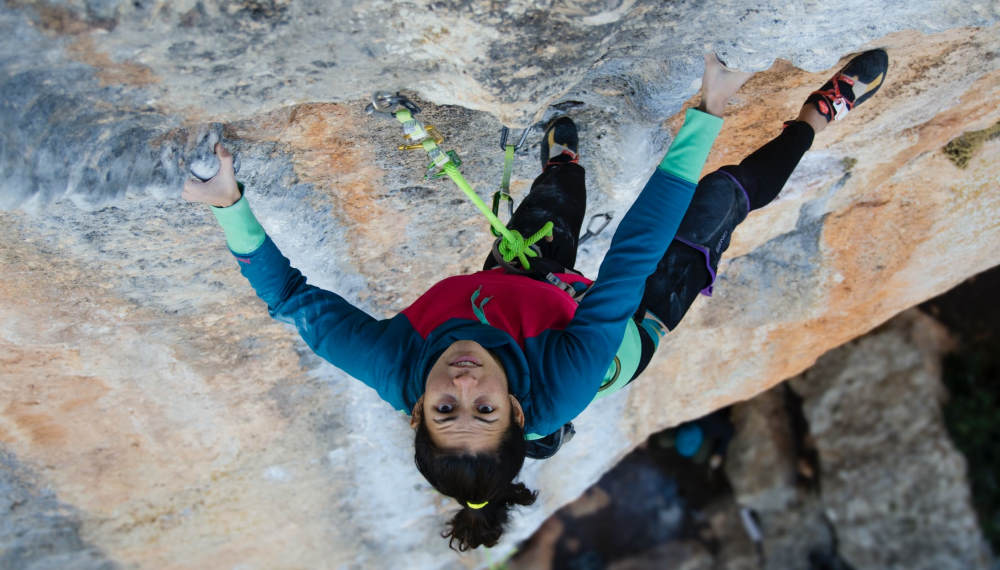
Average Distance Between Climbing Bolts?
In reality many climbs aren’t as well bolted as our first example. Typically the first bolt is fairly high at around 4 to 5 meters (13 to 16 foot) up. A fall onto a very low bolt generally won’t protect you from hitting the deck, it also “hides” bolts from other outdoor users a little, plus bolts and hangars aren’t cheap.
Back in the days hangars were home-made, bolts were thin hardware-store basics, and were only placed where absolutely necessary. Depending on where you climb the bolting style, ethics, and funds will vary.
In modern sport climbing areas – especially in Spain and other popular areas of Europe – the bolting tends to be on the safer, more planned side. Expect well though out bolt placements for easier clipping, high quality hardware, and regular bolt placements for safer falls.
These days rappelling in from the top of a route (rap bolting) and thinking carefully about bolt placement is assumed and taken for granted. However it wasn’t that long ago that rap bolting was sacrilege, and bolts were only supposed to be placed ground-up on the first ascent – usually in a blind panic.
Watch Ondra trying some sketchy ground up bolting in the Czech Republic compared to modern bolting in Sicily.
More Great Sport Climbing Guides
Best Belay Device For Beginners
Best Climbing Rope
Best Climbing Shoes For Beginners
What Is Sport Climbing?
What Is A Runout?
A runout is a section of a climb with potential for a large fall because of lack of protection. Whether this means no bolts, nowhere to place trad gear, or a mixture of both. Comparing (…bragging about) runouts around a campfire is one of rock climbing’s grand traditions.
There are some historic areas like the Flatirons in Colorado or the Frankenjura in Germany where bolts can be scarce. It’s also seen as part of the local ethic sometimes to not add bolts – even if it seems dangerous – or even to only replace old hardware with a similar style.
“If in doubt, run it out” is a pretty well used phrase that’s more tongue in cheek than an actual rule.
What Should I Do If I Run Out Of Quickdraws On A Route?
Running out of quickdraws has happened to many sport climbers. Maybe you misjudged how many bolts there were, maybe you checked the draws needed before but got onto the wrong route, maybe you dropped a draw or just plain forgot. Don’t panic.
Do:
- Look at how many more bolts you have to get to the chains
- Let your belayer know what’s happening
- Just one or two more? Down climb below your last carabiner and salvage a few quickdraws from lower down. Not the top one you just clipped
- A few more? Consider bailing from the route or lowering to try again with more draws – leaving the ones you’ve already placed in
Don’t:
- Unclip the last draw you just clipped and risk a big fall
- Use a quickdraw or sling/draw you use to clean the anchors – then how will you get down? Read How Do Rock Climbers Get Down?
- Carry on climbing without knowing what’s up ahead or telling your belayer
Do I Need Different Quickdraws For Trad Climbing?
You can use sport quickdraws for trad climbing. However, if you’ll do a lot of trad it’s worth buying specific trad quickdraws. Trad draws are lighter and this will make a difference when you’re scrambling to place gear.
You’ll also want to get a few quickdraws with extendable slings to reduce rope drag. They also help to avoid sideways or “secondary” pull on your protection placements.
DMM Phantom Wire Gate 6-Pack
With the excellent Phantom wire gate carabiners you’ll save a lot of weight but retain strength. Thin Dynatec dogbones also save a bit too.
Back these up with a couple of 18cm quickdraws and extendable sling quickdraws and you’ll be covered for most situations.
The idea is most of your trad gear should be placed to take downwards pull. If you have a winding route and two quickdraws that are too short, you can end up with a fall pulling gear together – sideways. Unintended rope drag can also “walk” gear out of a good placement.
All trad protection placements are done per route so sometime you plan for this and place for a sideways pull. However, most of the time you’ll use a longer extendable sling to stop this. Extendable slings on quickdraws are common or you can use a couple of carabiners and a sling to make one.
We won’t go into detail on trad placement and quickdraws use here because it’s better to learn in person. Find a good guide or teacher to teach you first then try practice placements on mock lead (on top rope for safety but placing as if you were on lead).
How Many Quickdraws Do I Need For Trad Climbing
This is way more nuanced than sport climbing because no trad route is the same as another. Having a range of different quickdraw lengths and a few extendable slings is a good start. Six 12cm, two 18cm, and four extendable alpine style draws is a good start.
Taking a good look before a climb to see where you might place gear is also good, as is having a good guidebook with gear suggestions. Knowing if some placements need to be doubled up means an extra quickdraw or maybe just an extra sling.
Awesome header image credit Ingolf Zeiner Peterson
